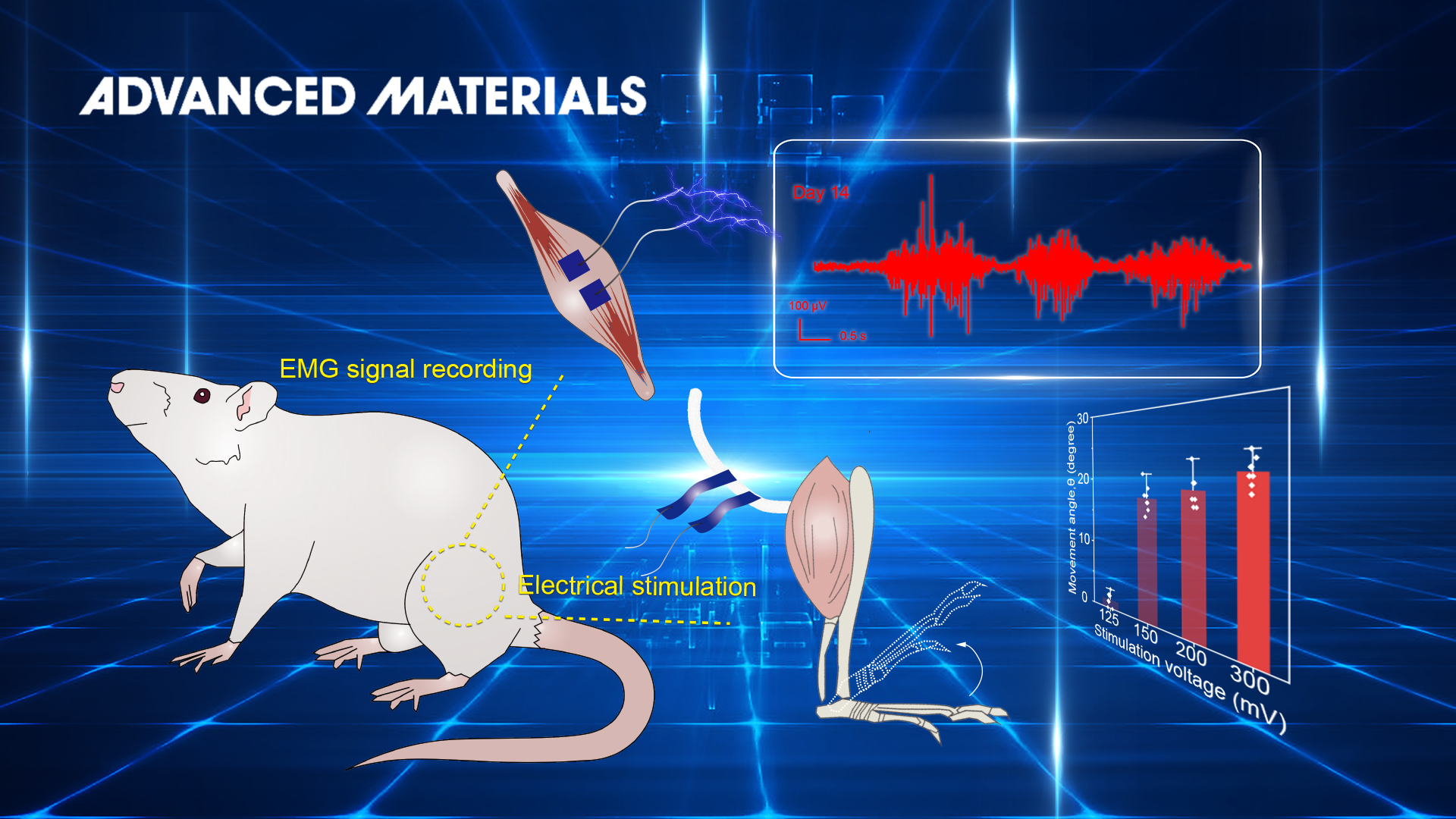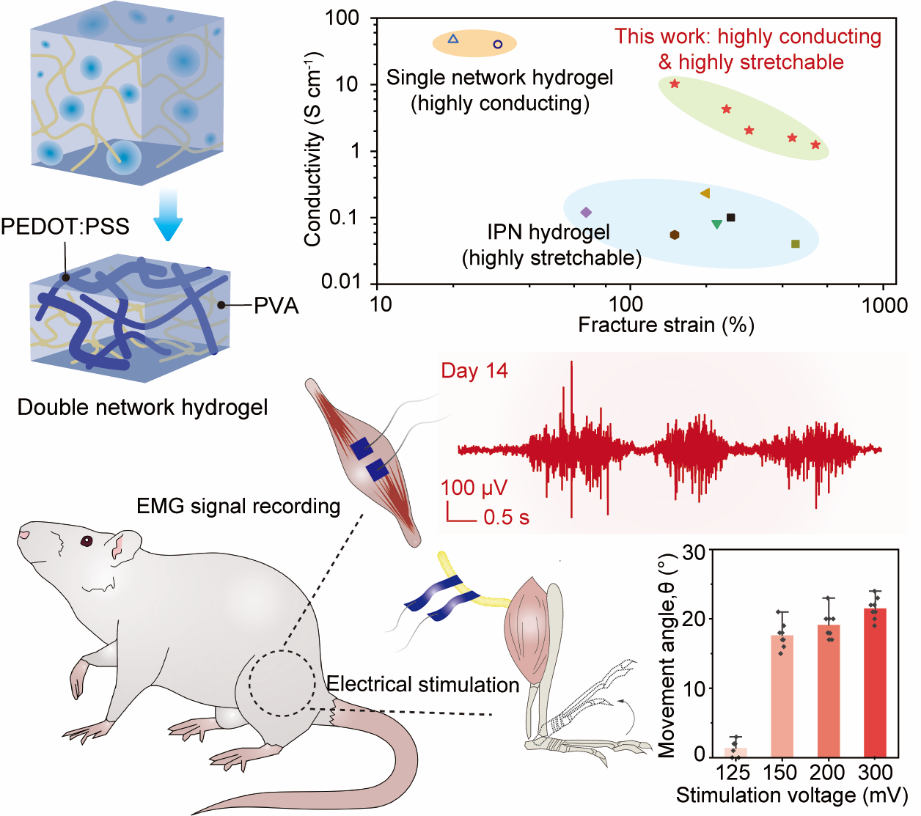Bioelectronics is blurring the boundary between electronics and the human body. It is proven to be an effective alternative to pharmaceutical therapy in treating various diseases. Recent research is pushing bioelectronics into the era of soft bioelectronics, which aims to apply tissue-like soft materials to replace the traditional metal and plastic that make electronic devices. The soft materials used are expected to be more compatible with bio-tissue to reduce the immune response.
Hydrogel is a tissue-like material among synthetic materials, and it plays an important role in soft bioelectronics. Conducting hydrogel is an ideal substitute for metals serving as the electrode for electronics. However, existing conducting hydrogels are in a dilemma. Highly conducting hydrogels are not stretchable, whereas the stretchable ones are of poor conductivity.

Professor Chuanfei Guo’s team from the Department of Materials Science and Engineering at SUSTech has recently resolved this problem using a method which they call ‘in situ an aggregation and deswelling’ method. Their research, entitled “Highly Conducting and Stretchable Double Network Hydrogel for Soft Bioelectronics”, has been published in Advanced Materials.

Figure 1. Overview of the double network hydrogel, including the network structure, the comparison with other hydrogels, and the application in bioelectronics
Prof. Guo’s team first disperse conducting polymer colloidal particles in the matrix of a polyvinyl alcohol (PVA) hydrogel. They then soak the hydrogel inside acetic acid, which is a poor solvent for the PVA and the colloidal particles. The poor solvent deswells the hydrogel to a highly shrank state, strongly concentrating the conducting polymer. At the same time, the poor solvent also causes the aggregation of colloidal particles constrained inside the PVA network, resulting in a uniform conducting network penetrating with PVA. The well-designed double network structure endows the hydrogel’s high conductivity and high stretchability.
The researchers also demonstrated the excellent mechanical-electrical stability and desired bio-compatibility, together with the high charge storage capacity of the double network hydrogel. They showed that the hydrogel could integrate with bio-tissues after grafting a bio-adhesive layer. The hydrogel has been applied as an implantable electrode in a rat model, performing well in both recording bio-signals and neural stimulation.
“Our method offers a platform for multi-functional conducting hydrogels. Now, we can add a second polymer network in the hydrogel without damaging its conductivity. This means a lot. If the non-conducting network is stimuli-responsive, we can obtain a stimuli-responsive hydrogel electrode. If the non-conducting network is shape memorable, we can obtain a shape memorable electrode. We anticipate these multi-functional intelligent electrodes, which is in our ongoing project, can benefit the design of new bioelectronic devices.” said Gang Li, a member of Prof. Guo’s research team.
Gang Li, Kaixi Huang, and Jue Deng are the co-first authors of this research paper. Prof. Chuan Fei Guo is the corresponding authors.
The research was supported by the National Natural Science Foundation of China (NSFC), the Guangdong Innovative and Entrepreneurial Research Team Program, the Shenzhen Science, Technology and Innovation Commission, and the Shenzhen Sci-Tech Fund.
Paper link: https://doi.org/10.1002/adma.202200261
To read all stories about SUSTech science, subscribe to the monthly SUSTech Newsletter.
Proofread ByAdrian Cremin, Yingying XIA
Photo By